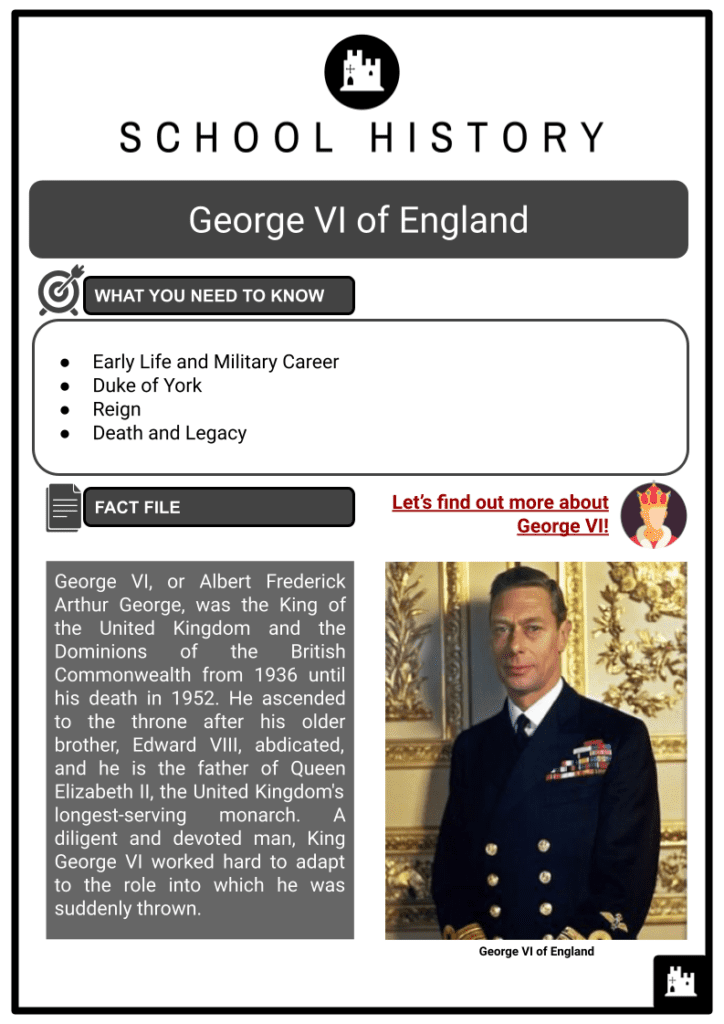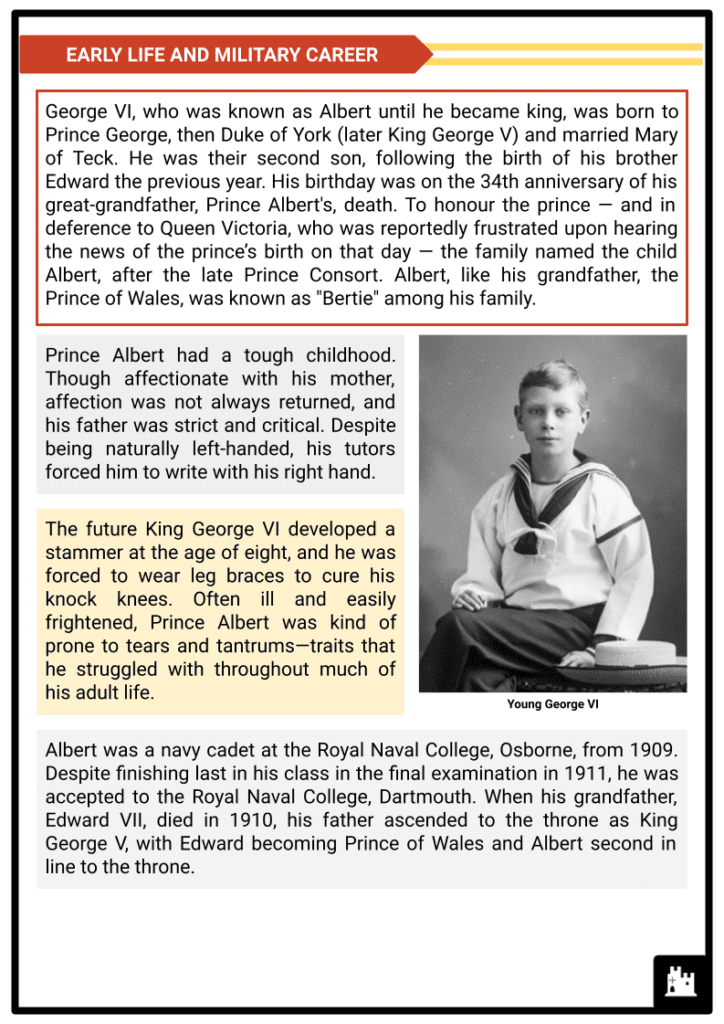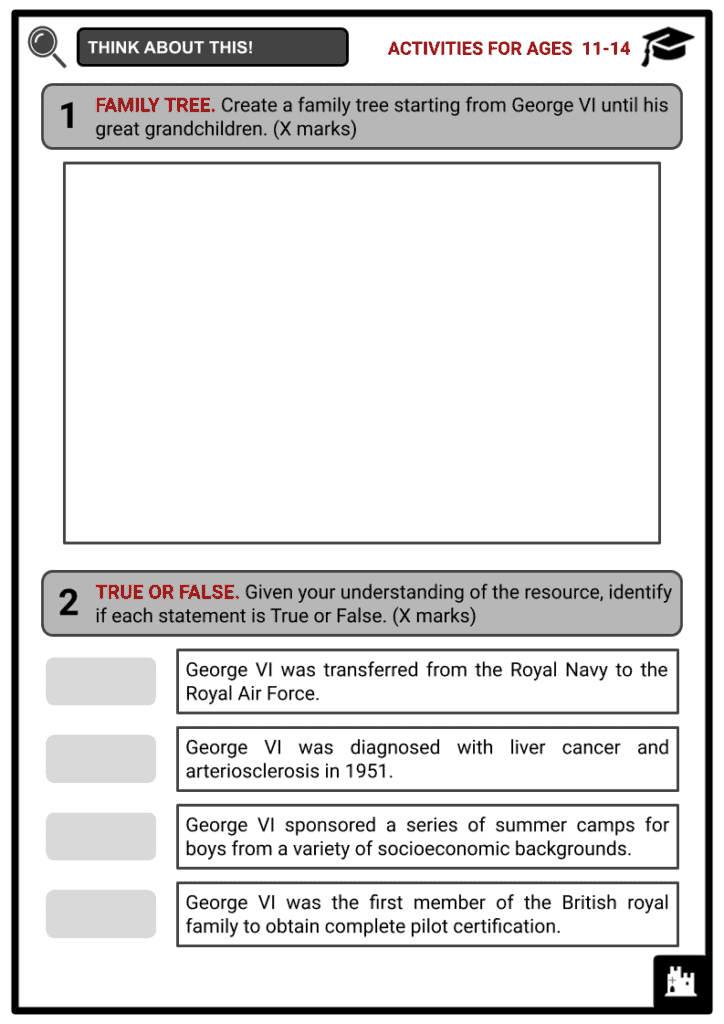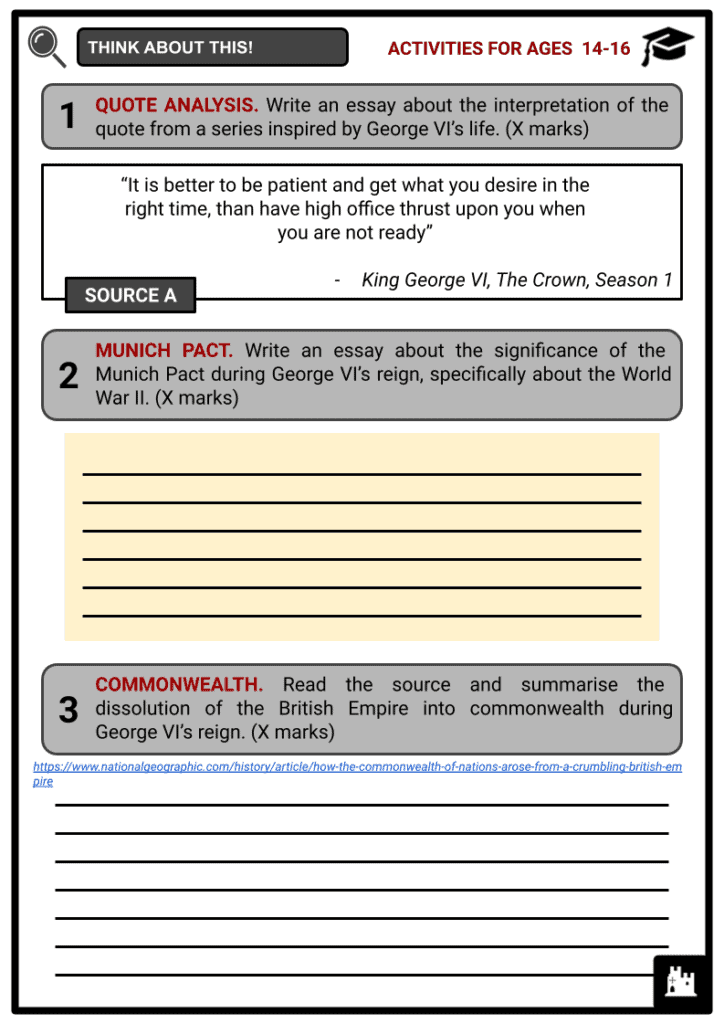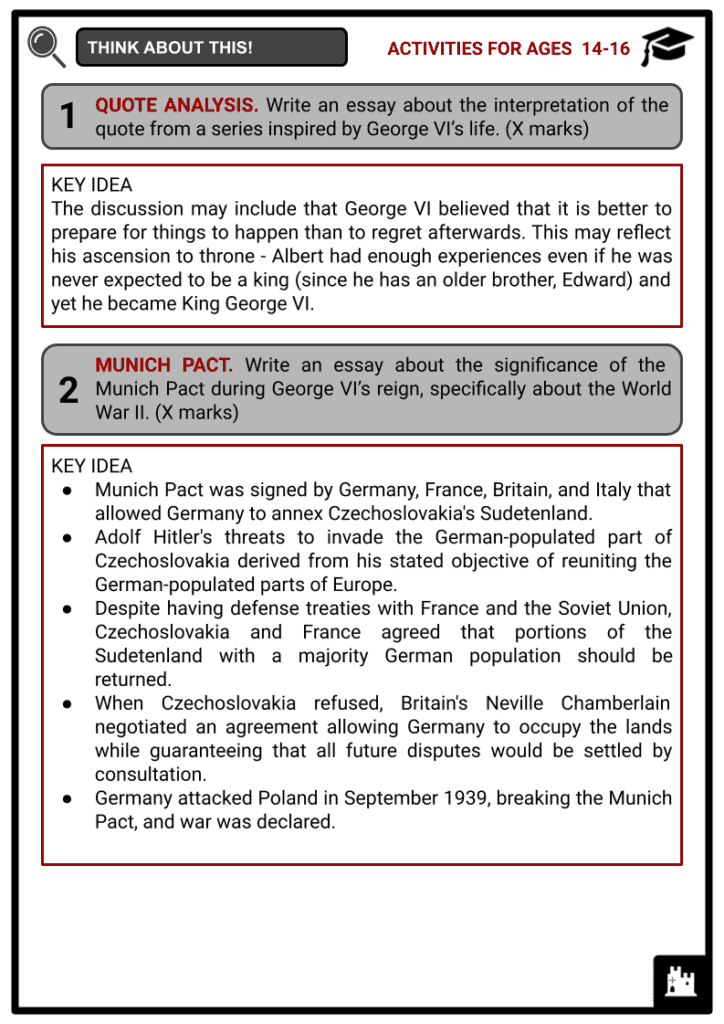Download George VI of England Worksheets
Do you want to save dozens of hours in time? Get your evenings and weekends back? Be able to teach about George VI of England to your students?
Our worksheet bundle includes a fact file and printable worksheets and student activities. Perfect for both the classroom and homeschooling!
Summary
- Early Life and Military Career
- Duke of York
- Reign
- Death and Legacy
Key Facts And Information
Let’s know more about George VI of England!
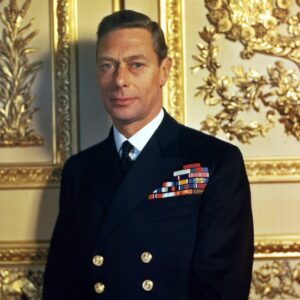
George VI, or Albert Frederick Arthur George, was the King of the United Kingdom and the Dominions of the British Commonwealth from 1936 until his death in 1952. He ascended to the throne after his older brother, Edward VIII, abdicated, and he is the father of Queen Elizabeth II, the United Kingdom's longest-serving monarch. A diligent and devoted man, King George VI worked hard to adapt to the role into which he was suddenly thrown.
EARLY LIFE AND MILITARY CAREER
- George VI, who was known as Albert until he became king, was born to Prince George, then Duke of York (later King George V), and married Mary of Teck. He was their second son, following the birth of his brother Edward the previous year. His birthday was on the 34th anniversary of his great-grandfather, Prince Albert's, death. To honour the prince — and in deference to Queen Victoria, who was reportedly frustrated upon hearing the news of the prince’s birth on that day — the family named the child Albert, after the late Prince Consort. Albert, like his grandfather, the Prince of Wales, was known as "Bertie" among his family.
- Prince Albert had a tough childhood. Though affectionate with his mother, affection was not always returned, and his father was strict and critical. Despite being naturally left-handed, his tutors forced him to write with his right hand.
- The future King George VI developed a stammer at the age of eight, and he was forced to wear leg braces to cure his knock knees. Often ill and easily frightened, Prince Albert was kind of prone to tears and tantrums—traits that he struggled with throughout much of his adult life.
- Albert was a navy cadet at the Royal Naval College, Osborne, from 1909. Despite finishing last in his class in the final examination in 1911, he was accepted to the Royal Naval College, Dartmouth. When his grandfather, Edward VII, died in 1910, his father ascended to the throne as King George V, with Edward becoming Prince of Wales and Albert second in line to the throne.
-
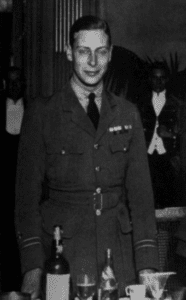
Albert at RAF dinner On 15 September 1913, Albert was rated as a midshipman on board HMS Collingwood after spending the first six months of 1913 on the training ship HMS Cumberland in the West Indies and on the east coast of Canada. He spent three months in the Mediterranean, but his illness never went away.
- In February 1918, he was sent to the Royal Naval Air Service's Cranwell training base as Officer in Charge of Boys. Albert was transferred from the Royal Navy to the Royal Air Force when the Royal Air Force was formed. Before going to the RAF's Cadet School at St Leonards-on-Sea, he served as Officer Commanding Number 4 Squadron of the Boys' Wing at Cranwell until August 1918. After a fortnight of training, he was given the leadership of a Cadet Wing squadron. He was the first member of the British royal family to obtain complete pilot certification.
ALBERT AS DUKE OF YORK
- He recovered from an emergency appendectomy in 1913 and rejoined the war effort, eventually being mentioned in dispatches for his role in the Combat of Jutland, the war's greatest single naval battle. In 1917, Albert had to have surgery for an ulcer, which was another medical setback. In the dying days of the war, he was deployed to France, and after the war ended in 1919, he became a full-fledged RAF pilot and was elevated to squadron commander. In 1920, he was appointed Duke of York, and he began to take on more official responsibilities, despite his stutter, which made public speaking difficult.
- Albert met Lady Elizabeth Bowes-Lyon, daughter of the Earl and Countess of Strathmore and Kinghorne, in the same year. He fell in love with her right away, but the road to marriage was not so easy.
- She turned down his marriage proposal twice, in 1921 and 1922, since she wasn't convinced she wanted to undertake the sacrifices required of a royal. However, by 1923, she had consented, and the pair married on April 26, 1923. Elizabeth and Margaret, their daughters, were born in 1926 and 1930, respectively.
- He represented his father and toured coal mines, factories, and railyards. He earned the title "Industrial Prince" as a result of his travels. He appeared less confident in public than his elder brother, Edward, due to his stutter and discomfort about it, as well as a predisposition to shyness. He was, nonetheless, physically active and liked tennis.
- In 1926, he competed in the Men's Doubles at Wimbledon partnering Louis Greig, losing in the first round. He became interested in working conditions and went on to become the president of the Industrial Welfare Society. Between 1921 and 1939, he ran a series of yearly summer camps for boys that brought together youths from all walks of life.
- Albert and Elizabeth choose to live a rather quiet life. Albert's public speaking duties prompted him to hire Lionel Logue, a speech therapist who helped the prince enhance his public speaking skills using breathing and voice exercises. In 2010, the Oscar-winning film ‘The King's Speech’ dramatised Albert and Logue's collaboration.
- From 1921 until the onset of World War II, Albert advocated the development of working conditions, served as president of the Industrial Welfare Society, and sponsored a series of summer camps for boys from a variety of socioeconomic backgrounds.
REIGN OF KING GEORGE VI
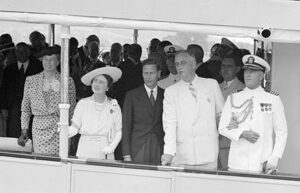
When George V died in 1936, Albert's brother Edward became King Edward VIII, sparking outrage since Edward planned to marry Wallis Simpson, an American woman who had divorced her first husband and was divorcing her second. The constitutional crisis that ensued was only resolved when Edward opted to abdicate rather than relinquish Wallis. On December 10, 1936, he did so. Because Edward was childless and unmarried, Albert ascended to the throne, using the regnal name George VI in honor of his father. He was crowned in Westminster Abbey on May 12, 1937—the date previously slated for Edward VIII’s coronation.
- Almost immediately, King George VI became embroiled in a debate about the United Kingdom's response to Hitler's attack on the European continent.
- Prime Minister Neville Chamberlain kept up his appeasement policy, and the king was legally obligated to back him up.
- The king and queen visited Canada in early 1939, becoming George VI the first British monarch to do so.
- They visited the United States during the same tour and forged a bond with President Franklin D. Roosevelt that would assist reinforce American-British ties in the years to come.
- King George VI, a major admirer of British Prime Minister Neville Chamberlain, felt that Chamberlain might prevent a conflict with Nazi Germany in the 1930s. Chamberlain met with Adolf Hitler, the German Fuhrer, in 1938 and signed the Munich Pact. Despite the opposition party in Parliament criticising Chamberlain's attempts as a "policy of appeasement," King George VI backed his prime minister. Following the announcement of the agreement, he and Chamberlain appeared together on the balcony of Buckingham Palace to welcome the audience, a ritual usually reserved for royal family members.
- Germany attacked Poland in September 1939, breaking the Munich Pact, and war was declared. King George successfully delivered one of his most significant speeches, informing the population of Britain that the kingdom was at war, with the aid of his speech therapist and his wife—an event dramatised in the 2010 film, ‘The King's Speech’.
- After Germany failed to react to an ultimatum given in response to their invasion of Poland, the United Kingdom and its European allies declared war on Germany on September 3, 1939. The royal family remained in official residence in London during World War II, despite regular air assaults by the German Luftwaffe, however they really shared their time between Buckingham Palace and Windsor Castle.
- Winston Churchill became Prime Minister in 1940. Although his relationship with King George VI was rough at first, they quickly formed a good connection that helped bring the United Kingdom together. during the years of the conflict To maintain morale, the king and queen made several visits and public appearances, and the monarchy reached a new peak in popularity.
- In 1943, King George VI paid a visit to British troops stationed in North Africa. Later, King George VI paid a visit to the troops in Malta, conferring the George Cross on the whole island, which he established to commemorate remarkable acts of courage by citizens. The monarch paid a visit to the troops in Normandy in June 1944, ten days after the D-Day assault. During the war, he experienced personal sorrow when both his wife's nephew and his youngest brother were slain.
- The war ended in 1945, and the United Nations' inaugural assembly was held in London the following year, with George VI giving the opening address.
DEATH AND LEGACY
- In the years following the war, King George VI focused on concerns concerning his own empire, which was losing importance and authority on the international scene. In 1947, India and Pakistan gained independence, while Ireland quit the Commonwealth in 1948. George VI was given a new title when India became a republic: Head of the Commonwealth.
- After World War II, King George VI's health began to deteriorate dramatically as a result of the stress of war.
- Princess Elizabeth, the prospective successor, began to take up some of his royal duties about this time.
- After suffering an artery blockage in 1949, the king's planned visit of Australia and New Zealand was postponed.
- King George was diagnosed with lung cancer and arteriosclerosis in 1951, after years of heavy smoking. His left lung was removed on September 23, 1951.
- George VI was discovered dead in his bed on February 6, 1952, at the age of 56. He previously suffered from lung cancer and had a lung removed; it was later determined that he had died of a coronary thrombosis.
- After George VI's death, Princess Elizabeth, George VI's daughter, ascended to the throne and became Queen Elizabeth II at the age of 25. At the age of 27, she was formally crowned. To avoid confusion with her daughter, Queen Elizabeth, the widow of King George VI, adopted the nickname "Queen Mother."
- He is buried in St. George’s Chapel, and the remains of his wife Queen Elizabeth the Queen Mother and his younger daughter Margaret have since been interred alongside him. King George VI was never meant to be king, yet he presided over Britain's final years as an imperial force and guided the country through one of its most hazardous periods.

